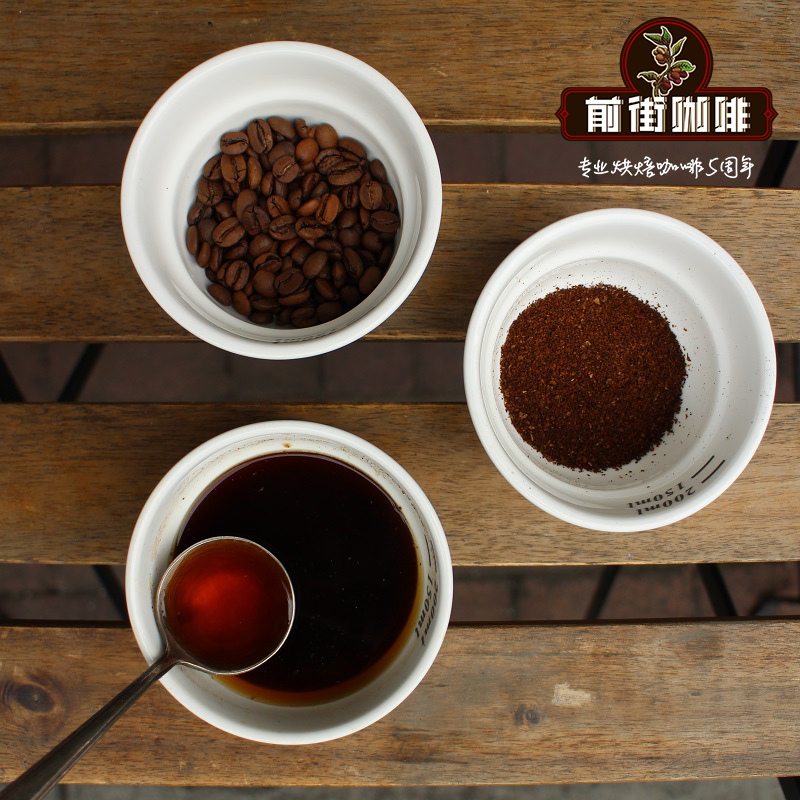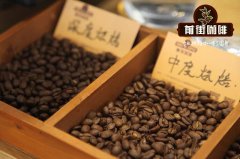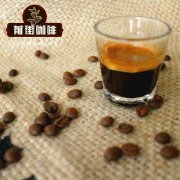Introduction to the current situation of coffee cultivation in Myanmar is Burmese coffee delicious?

Professional coffee knowledge exchange more coffee bean information please follow the coffee workshop (Wechat official account cafe_style)
According to the report of the Burmese sprudge Association, the quality of coffee beans in Myanmar is well protected internationally.
Consultant Hong visited the coffee park in Mandalay province, a major province in central Myanmar, and was impressed by the Arabica coffee bean garden planted in the park. In the six-acre planting park, it is well-managed and tightly guarded, making it impossible for people to enter without an appointment.
However, there are still many problems in Myanmar's coffee bean industry, such as planting technology, diversification of varieties, logistics of commodities, preservation of raw beans, baking technology and equipment, packaging, brand operation, etc., all of which are necessary to strengthen the Burmese coffee bean industry in the future, and investors who are willing to join the Burmese coffee industry should think deeply.
Burmese coffee beans do not have enough aroma to perform an one-man show on their own.
First of all, let's talk about technology. We all know that the cultivation of coffee beans has its special climate, hydrology and temperature requirements. Among them, climate factors are the main success or failure factors in coffee cultivation. Coffee trees are only suitable for growing in tropical or subtropical areas, so it is suitable to grow coffee from 25 degrees north latitude to 25 degrees south latitude, so almost all of Myanmar is within this range (28N-10N). The temperature needs to be in a warm climate of 15-25C, and the annual rainfall must reach 1500-2000MM, as well as fertile soil and good drainage, so hot mountain areas seem to be the most suitable. In addition, you can't get too much sun, so more higher plants will be planted next to the coffee trees to help reduce the amount of sunlight. as a result, the mountains of Myanmar's Mandalay, Shan, Karen and Delindayi provinces are perfectly suitable for growing coffee beans in Myanmar.
But only with the environment and without advanced management and technology, there is still room for improvement in the quality of coffee. Consultant Hong took Burmese coffee beans back to Taiwan five years ago and invited professionals to bake, taste, and identify them. At that time, Burmese coffee beans could only be used as ingredients for coffee beans from other countries, and it seemed that they could not play an one-man show on their own. Although five years have passed, consultant Hong has also bought some test beans, but the quality is still not up to the high standard (sold as if the CITY COFFEE has already reached the standard), so the introduction of advanced cultivation techniques is an opportunity in this industry.
Damp and rainy, everything is moldy, and it is difficult to preserve
The preservation of raw beans is also a big problem. Myanmar is wet and rainy, with a rainy season of more than five months a year, making it difficult to preserve raw beans and solve the problem of mildew. Coupled with the overall shortage of electricity and electricity in Myanmar, and the unsound development of power equipment in rural areas (many households do not have access to public power grid services), it is very difficult to preserve. Consultant Hong once bought baked beans in a local supermarket in Myanmar, but when he opened it, he found it was moldy and had to admit to losing the whole bag, which was a big problem.
The variety is unique, and the flavor is strong and slightly insufficient.
At present, there are only Arabica beans in Myanmar. Consultant Hong bought Burmese coffee beans sold in the supermarket to soak, which is not as mellow and less fruity as the classic Arabica beans. I try to think, it should be that the baking technology is not in place, otherwise how can we obtain international recognition? But individuals prefer blue mountains with a slightly sour taste, or Mantenin with a slightly bitter and sweet fruit flavor, which Burmese coffee beans still lack. Look forward to the introduction of ambitious things in the future.
The equipment of baking beans is poor, and the technology falls behind the international level for 50 years.
In the way of baking beans in Myanmar, the method of burning wood is still used to roast beans manually. In a high temperature environment, it is difficult to bake (stir-fry) beans with wood that is not easy to control the heat. If the baking master is inexperienced or a distraction, it will cause the whole pot of beans to be scorched and scrapped (but if the slightly charred beans, the taste is particularly strong and scorched), coupled with the different quality of each pot, it is difficult to break into the international market of high-quality coffee beans.
Traditional packing, transparent plastic bag + stapler
Beans bought in raw bean farms are filled with traditional linen bags (no special waterproof measures), and the packaging used in the bean baking factory is amazing, using transparent plastic bags with high thickness (heat protection and weight resistance), with two nails on the staple machine, and it's on the market! Poor packaging, but also affect transportation and preservation, there is still a lot of room for progress.
The brand coffee bags purchased by the supermarket are similar to foreign coffee brands in design.
Although Burmese coffee beans can be bought in supermarkets, their packaging is similar to that of foreign coffee (similar to the public version), and there is no brand operation ability and technology, so so far, the Burmese coffee market is still dominated by three-in-one coffee.
Freshly ground coffee is fragrant and mellow, and a hot cup can boost the spirit of the day, but the coffee road in the Burmese market will take a long time to get back on track.
Qianjie coffee: Guangzhou bakery, the store is small but a variety of beans, you can find a variety of unknown beans, but also provide online store services. Https://shop104210103.taobao.com
Important Notice :
前街咖啡 FrontStreet Coffee has moved to new addredd:
FrontStreet Coffee Address: 315,Donghua East Road,GuangZhou
Tel:020 38364473
- Prev

Analysis on the present situation of Coffee Industry in Myanmar the rise of Coffee Brands in Myanmar
Professional coffee knowledge exchange more information about coffee beans Please pay attention to the coffee workshop (Wechat official account cafe_style) Coffee is not a new thing in Myanmar, but a long-standing crop. Western missionaries brought coffee beans to Myeik and Dawei in Burma at the end of the 19th century. Farmers at that time mainly grew robastian coffee. Until the last century.
- Next

Burmese Coffee Map introduction of Burmese Coffee varieties what kind of coffee is there in Myanmar?
Professional coffee knowledge exchange more coffee bean information Please follow the coffee workshop (Wechat official account cafe_style) Burma began to grow coffee beans in 1885, but for nearly a hundred years, there has been no sign of export or business. In the middle and late twentieth century, the United Nations Drug abuse Control Program (UNDCP) was launched to encourage Burmese farmers to give up opium poppy cultivation.
Related
- Does Rose Summer choose Blue, Green or Red? Detailed explanation of Rose Summer Coffee plots and Classification in Panamanian Jade Manor
- What is the difference between the origin, producing area, processing plant, cooperative and manor of coffee beans?
- How fine does the espresso powder fit? how to grind the espresso?
- Sca coffee roasting degree color card coffee roasting degree 8 roasting color values what do you mean?
- The practice of lattes: how to make lattes at home
- Introduction to Indonesian Fine Coffee beans-- Java Coffee producing area of Indonesian Arabica Coffee
- How much will the flavor of light and medium roasted rose summer be expressed? What baking level is rose summer suitable for?
- Introduction to the characteristics of washing, sun-drying or wet-planing coffee commonly used in Mantenin, Indonesia
- Price characteristics of Arabica Coffee Bean Starbucks introduction to Manning Coffee Bean Taste producing area Variety Manor
- What is the authentic Yega flavor? What are the flavor characteristics of the really excellent Yejasuffi coffee beans?

